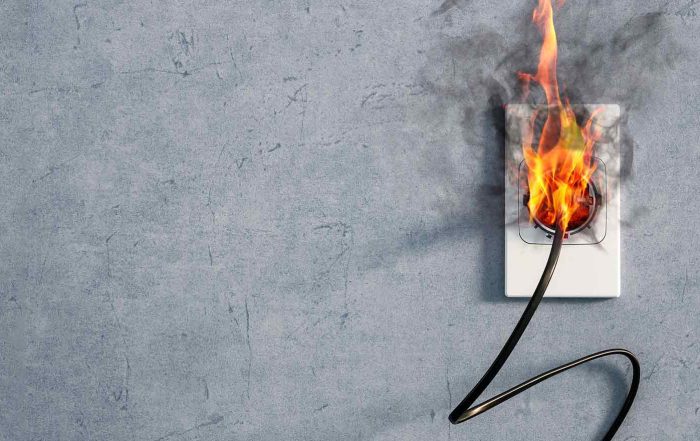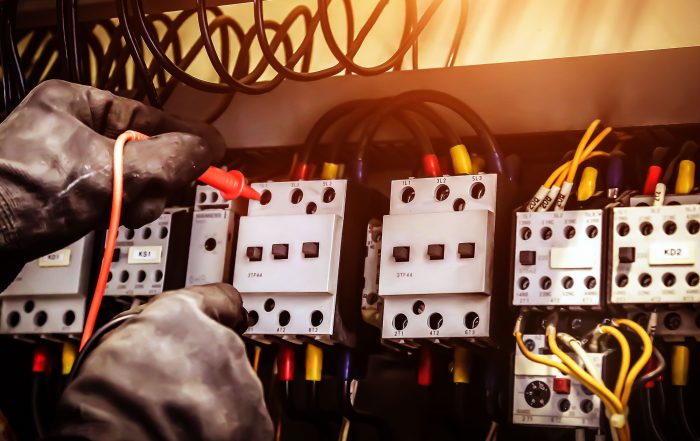The Most Dangerous Home Electrical Hazards
The Most Dangerous Home Electrical Hazards
We’re so used to having electrical devices in every room of the home that we often forget about all the stuff going on in the walls to make them work.
Potential electrical hazards exist in any home. Fortunately, you can reduce these hazards through awareness and taking the proper precautions. In this post, you’ll learn the most dangerous electrical hazards and the best ways to protect you and your home.
1. Poor Electrical Wiring
Poor electrical wiring can dramatically increase the chance of fire, arc faults, and other serious issues. Faulty electrical wiring is the leading cause of residential fires in the world today.
This is why it is extremely important to have your wiring installed by a professional electrician. It is also good practice to have a licensed electrician check your home’s wiring every few years to make sure nothing is in need of repair. If the wiring in your home is older than 10 years, or your electrical outlets or appliances haven’t been operating as expected, you should have your home electrical inspected and continue to schedule an annual checkup.
2. Outlets And Electrical Devices Near Water Sources
Water conducts electricity, meaning that outlets located near water sources will have an inherently higher chance of causing an electric shock. Outlets in bathrooms and kitchens should be installed a safe distance away from any water sources.
You should always unplug appliances that aren’t in use to help reduce the risk of electric shock. You can also lower the risk of electric shock by installing Ground Fault Circuit Interrupter (GFCI) protected outlets. If outlets close to water sources aren’t GFCIs, consider hiring a professional electrician to install them to avoid accidents and power interruptions.
3. Overloaded Power Strips And Outlets
Power strips and outlets are built to handle a specific amount of electricity. Each has a maximum number of amperes (amps) that it can handle. Plugging multiple high voltage devices into a power strip can easily overload the strip or the outlet, increasing the chance of an electrical fire.
Another potential hazard is plugging additional strips or adapters into a power strip. “Stacking” multiple plugs increases the number of amps the outlet is using and can result in electrical overload.
You can lower your risk of an electrical overload by only using one plug per socket in each outlet. If you use power strips, don’t plug them into each other — and look for models that include a circuit breaker. The breaker will lower the risk of fire by tripping if the power strip becomes overloaded.
4. Light Bulbs With The Wrong Wattage
A light bulb must have the appropriate wattage for the lamp it will be used in — this will help to mitigate the risk of electrical hazard. Using a higher wattage bulb than what the lamp can handle may overload the lamp’s wiring and cause a fire.
If you replace a light bulb, always make sure that the wattage is less than or equal to the maximum wattage of the lamp. There should be a sticker on the lamp fixture indicating the max wattage.
5. Faulty Appliances
Malfunctioning appliances are unsafe and should be avoided. Whether it’s a frayed cord or an appliance that frequently trips a circuit breaker, these devices increase the risk of electrical shock and fire.
If you find a faulty cord, stop using it immediately. Get a new cord and avoid trying to fix it yourself with electrical tape or other DIY solutions. When it comes to electrical work in your home, DIY is never the right choice. You can lower the chance of damaged cords by keeping them away from pets, water, and heat sources.
6. Unprotected Electrical Outlets
Small children like to explore new things and are often curious about electrical outlets. This presents a serious hazard as putting a finger or object into an outlet can cause shocks, burns, and electrocutions.
You can protect young children by using plastic covers to guard any outlet they can reach. Another option is to install child safety wall plates. These plates come with outlet covers that will automatically snap over any outlet that is not in use.
If you want to be as safe as possible, you can have a licensed electrician replace all your accessible outlets with “tamper-resistant” versions. Tamper-resistant outlets have spring-loaded shutters that close off the slots of the socket. In order to open, both springs must be compressed at the same time. This helps protect a child who inserts an object into only one contact opening.
7. Extension Cords
Extension cords are quite useful but can be an electrical hazard when not used properly.
Like other cords, using frayed or faulty extension cords is dangerous. You also want to avoid overloading the cord by plugging in multiple high-voltage appliances. Extension cords are designed to handle different power levels so it is important to use appropriate devices with each cord.
Avoid using extension cords for prolonged periods of time. If you are constantly using extension cords to power a certain area of your home, talk to a professional electrician about installing additional outlets instead.
Have Faraday Group Keep Your Home Safe
Faraday Group is ready to protect you from any and all home electrical hazards. We’ve been leading Sydney electricians for over 50 years and pride ourselves on quality, professionalism and expertise. Our home electrical services cover everything from powerpoints and switches to lighting, wiring and broadband, so no matter what, we’ve got you covered.
Call us today for a free quote and have confidence that your home’s electrical system is safe and sound for you and your family.



